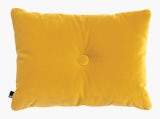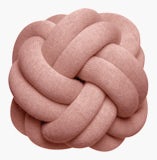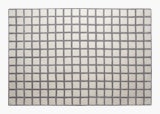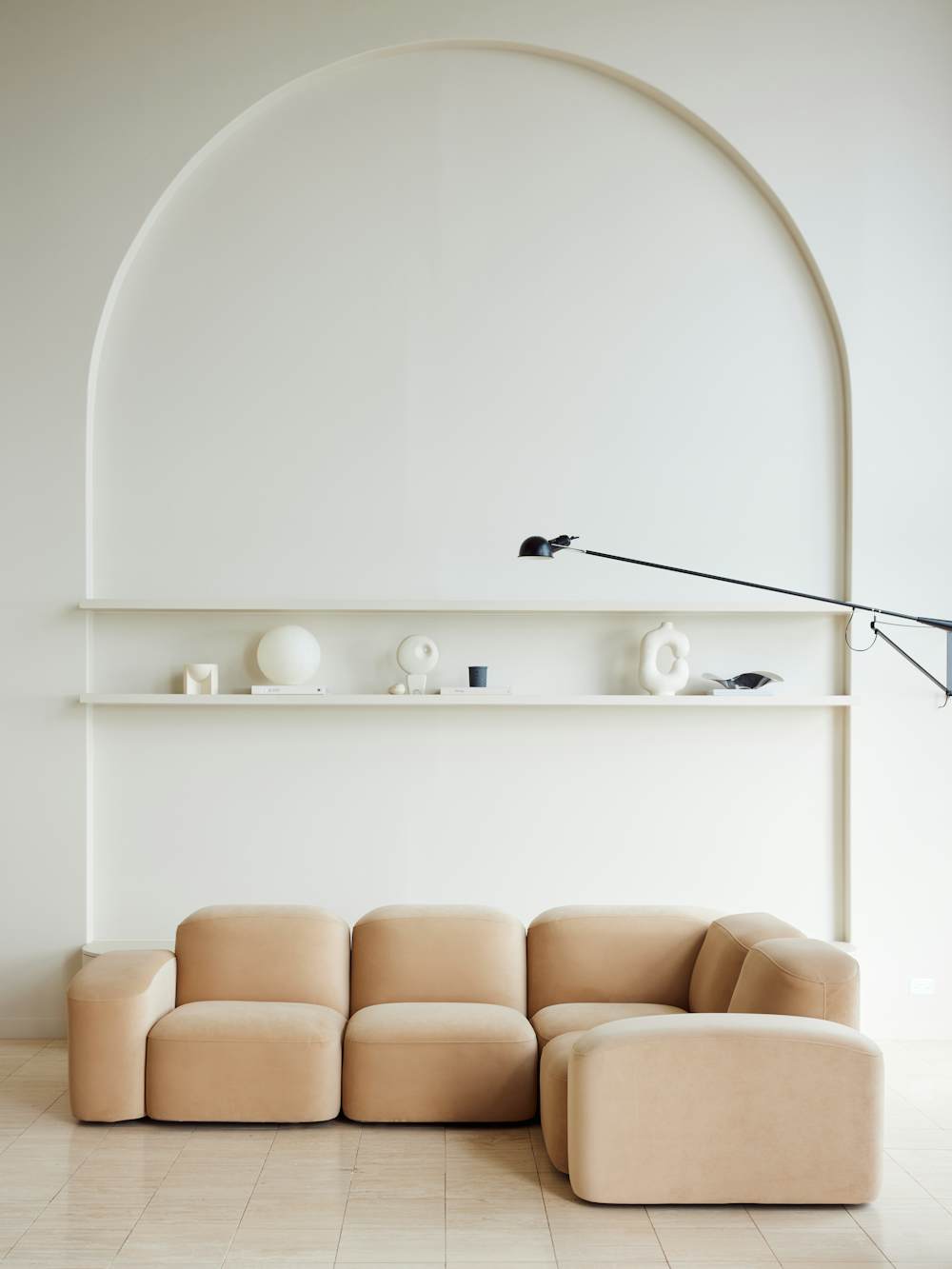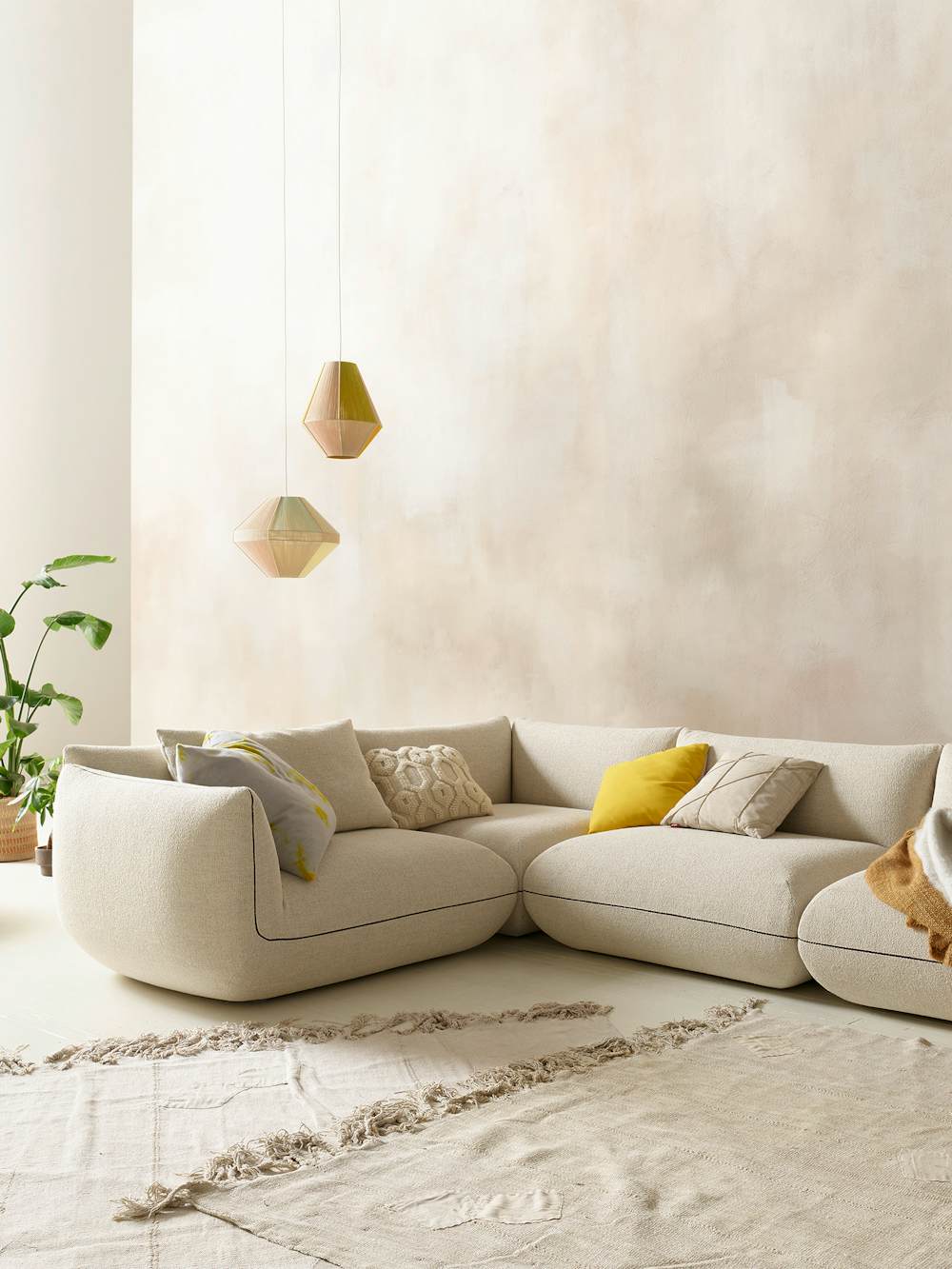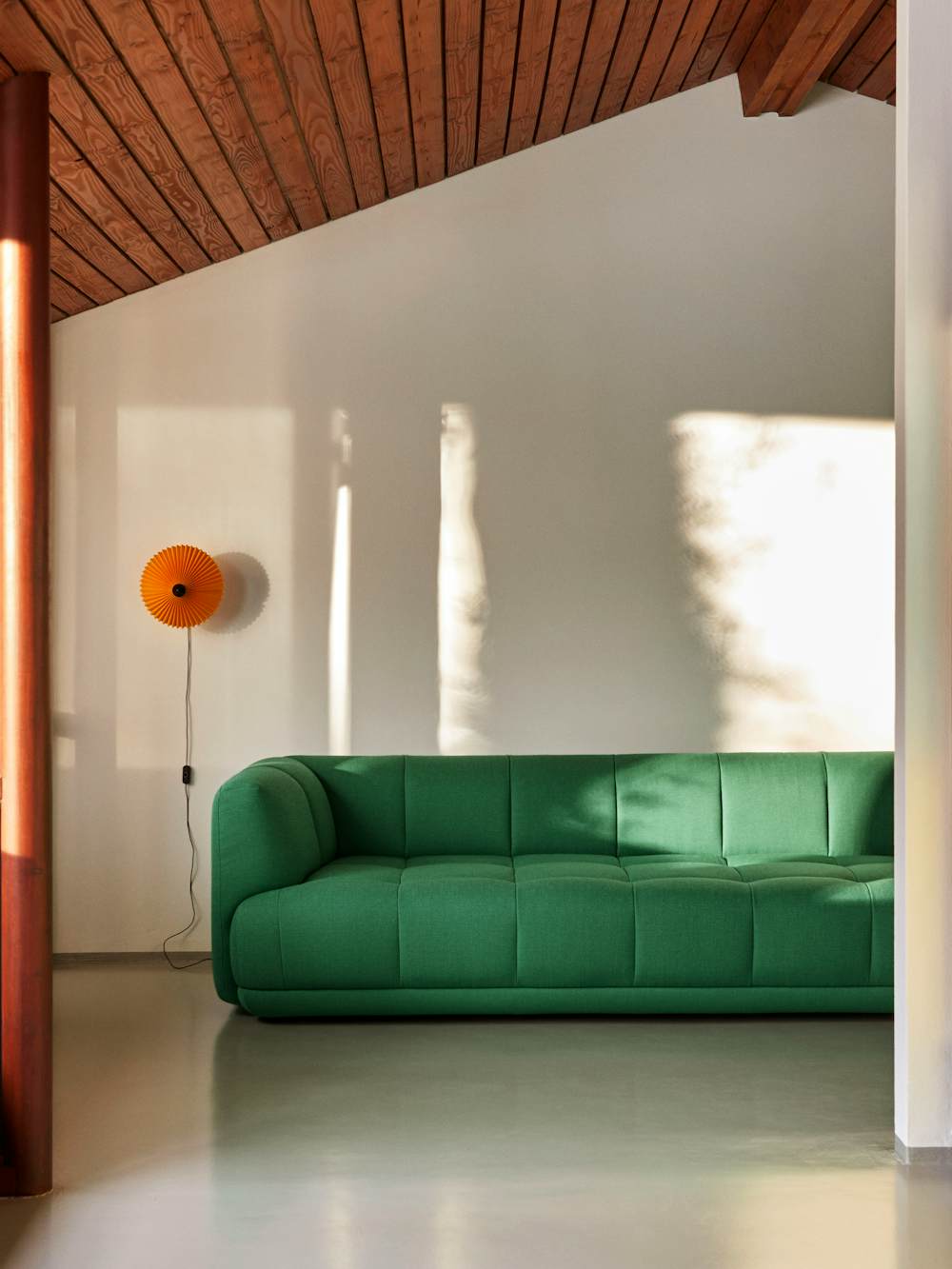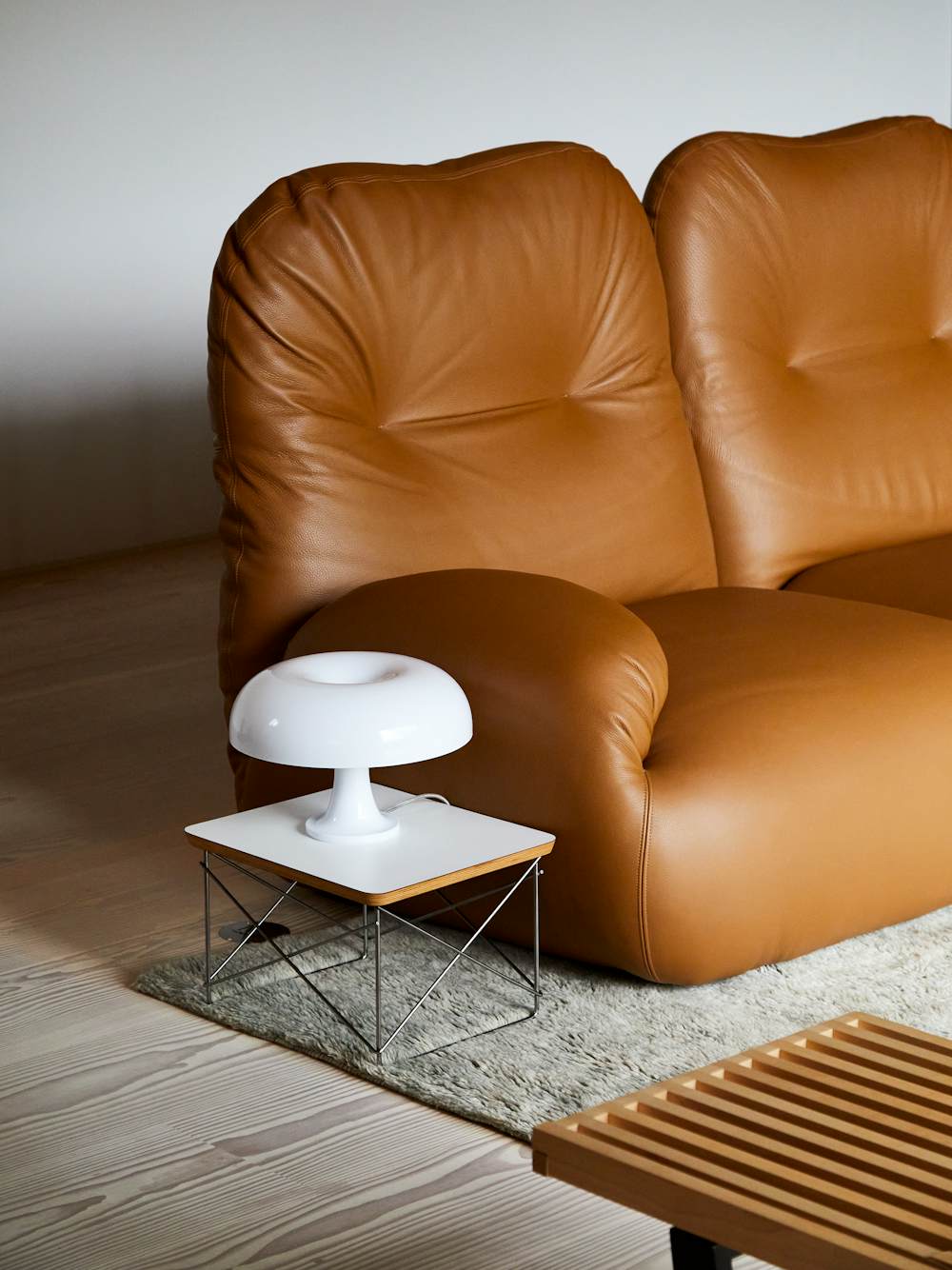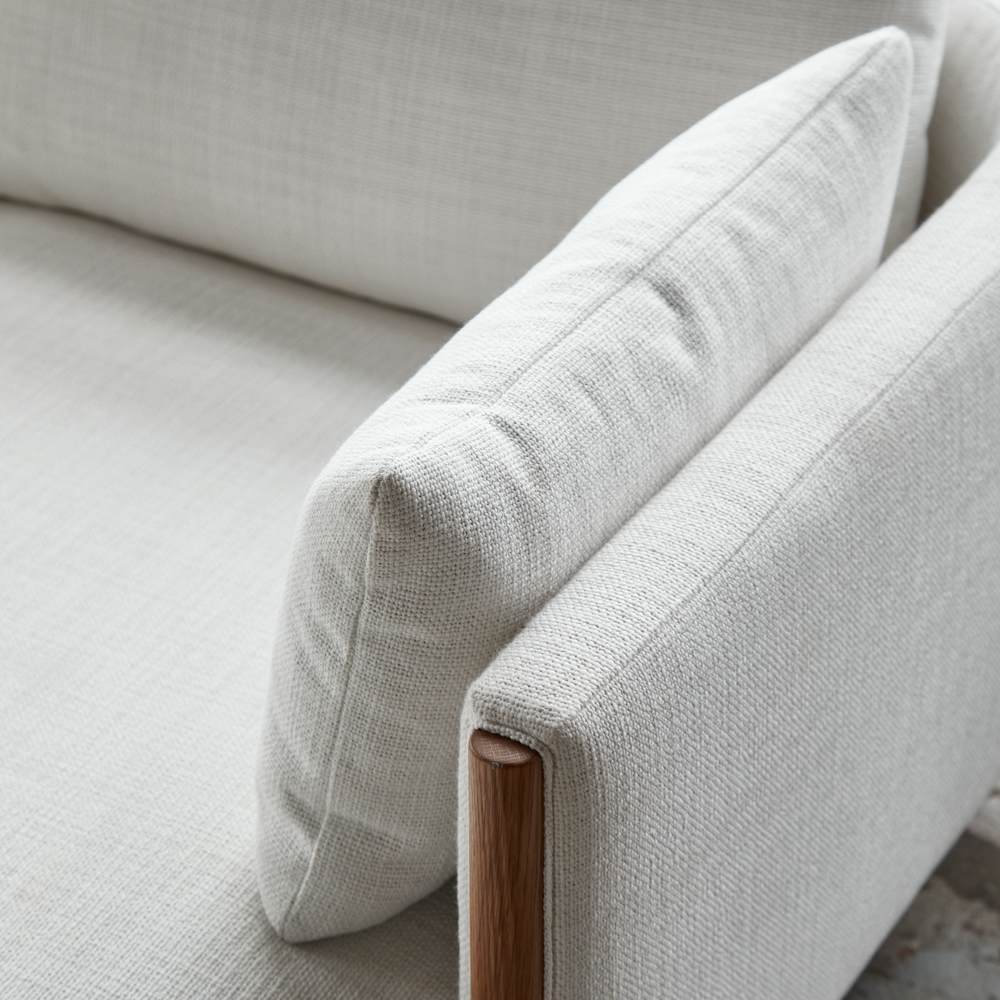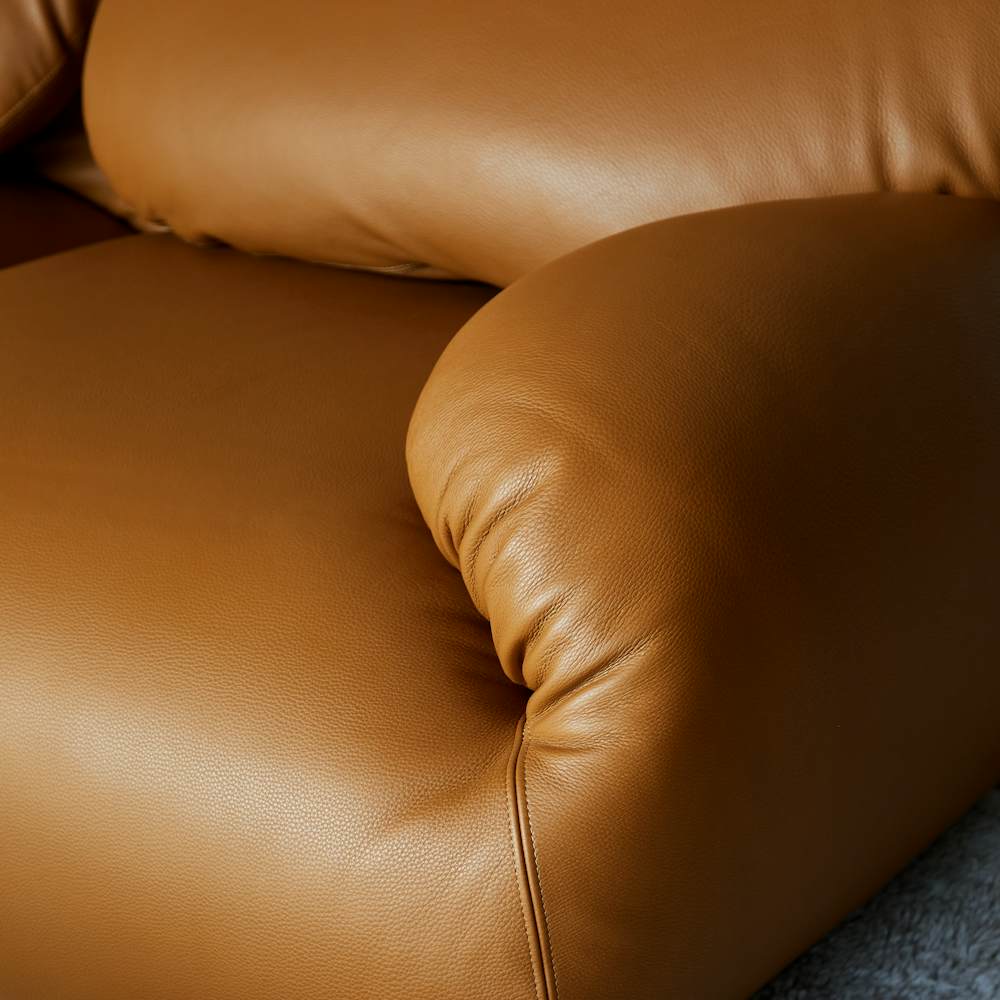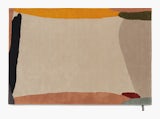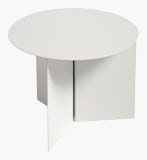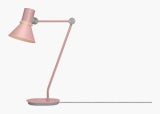A Guide to Choosing the Right Sofa or Sectional for Your Space
Choosing a modern sofa or sectional can be a daunting task. As the focal point of the living room, a sofa anchors and informs the space. Its size, style, and upholstery combine to set the tone for the room. As such, sofa design options are nearly endless. Such a broad selection ensures that the perfect piece does, in fact, exist. However, you might find yourself getting lost in a maze of choices as you scour the internet for the ideal sofa or sectional for your modern living room.
Here, we break down the decision, so you can easily find the piece that’s just right for you – whether it becomes a gathering place for family movie night or your favorite spot to curl up with a good book. If you’re eager to chat with a design expert, enjoy complimentary Design Services at Design Within Reach. Our pros offer furniture and fabric recommendations, room planning, 3-D renderings and more – all free of charge. For quick tips or to book an appointment, click the black chat icon in the bottom right corner of your browser.
Table of Contents
Types of Sofa + Sectional
Modern + Contemporary Sofa Styles
How to Choose the Right Sofa Size
How to Choose Sofa Materials
All About Sofa Construction
Final Tips
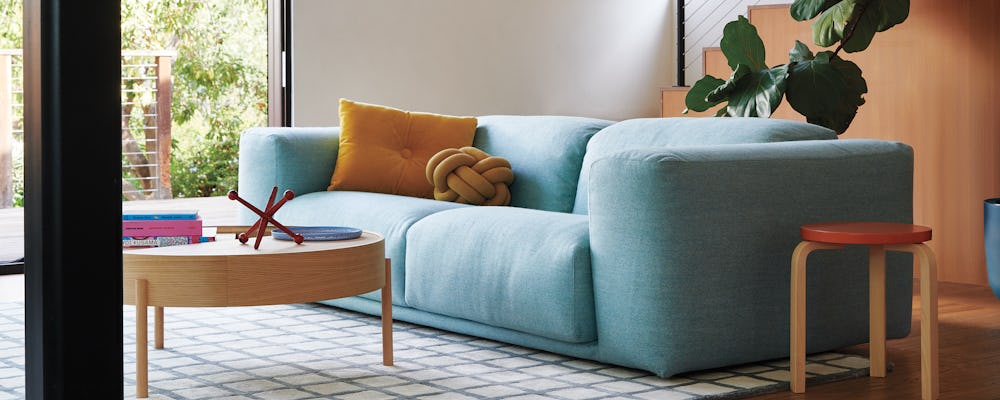
" A sofa or sectional is the focal point of a living room. It should be a functional piece that creates visual interest and sets the mood for the space. ” — Annette, Design Expert, DWR Austin Store
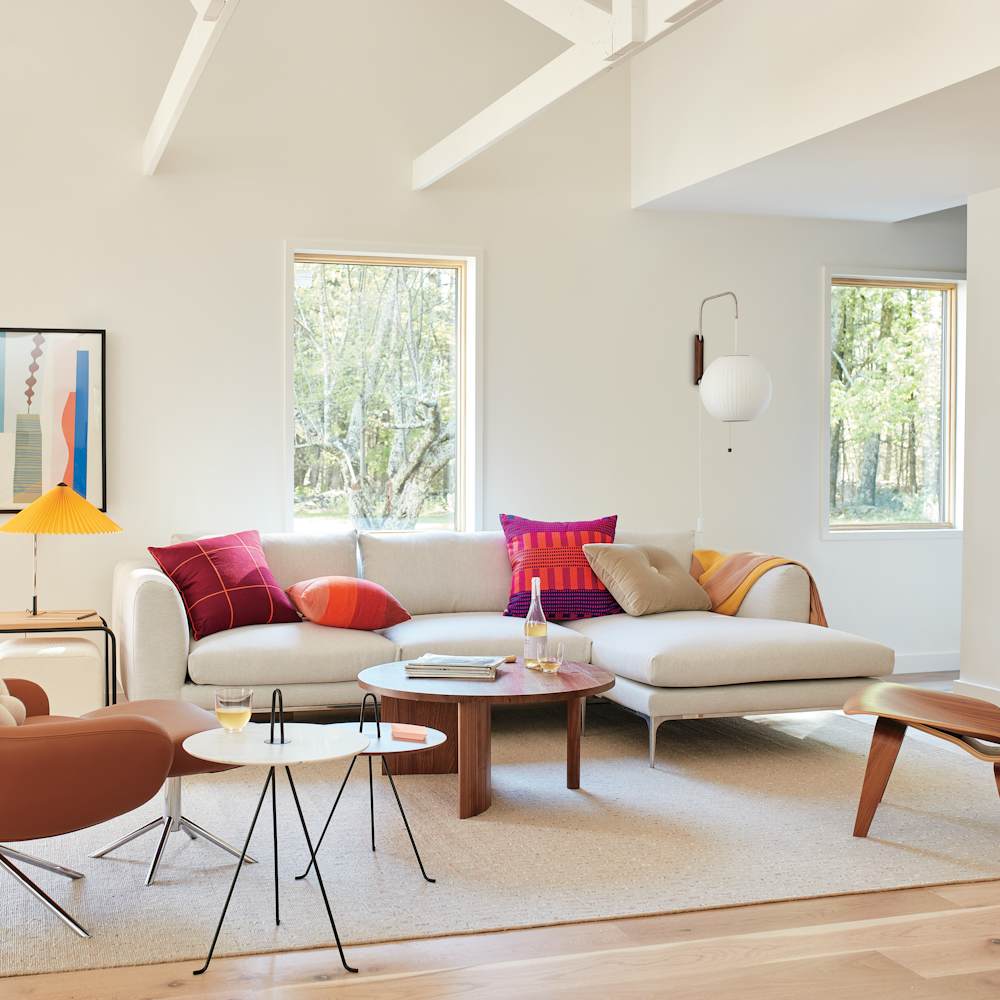
" A sofa or sectional is the focal point of a living room. It should be a functional piece that creates visual interest and sets the mood for the space. ” — Annette, Design Expert, DWR Austin Store
Choosing Sofas for Different Households + Lifestyles
Sofa size is the first thing to consider when choosing seating furniture for your living room. But don’t break out your measuring tape just yet. At this stage, think about couch sizes in terms of their ability to seat your household and any guests you might host – whether frequently or occasionally. There are four main types of sofas: loveseats/settees, standard two- and three-seater sofas, sleeper sofas, and sectionals.
If you have a relatively small household and don’t anticipate entertaining large groups, consider a loveseat or smaller sofa. If you do frequently host guests, think about how they might interact with your living room. Will they be gathering all at once, or filtering in and out of your living room for casual parties? In the former example, a spacious sectional is the perfect choice, enabling everyone to come together. In the latter, your household might be better served by a single two- or three-seater sofa, supplemented by accent and side chairs that can be moved and positioned as needed in your space.
Below, we detail the many different types of sofas and sectionals available, with functional suggestions to help you choose the right fit for your home.
Types of Sofas
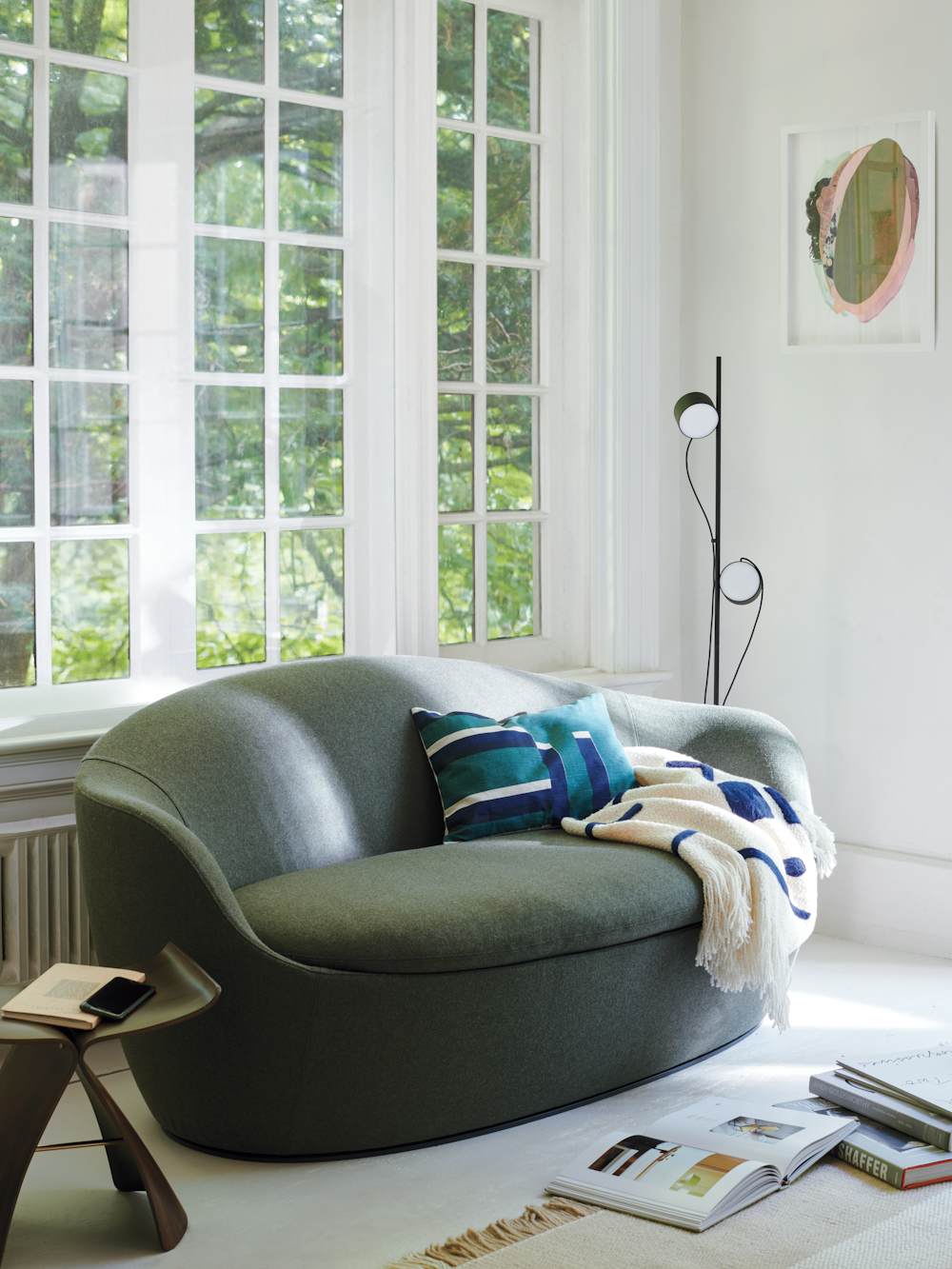
Settee/Loveseat
Slender and compact in size, a settee, also known as a loveseat, is a sophisticated option for a cozy space. Usually, a loveseat consists of one or two seat cushions for up to two people. A loveseat owes its name, in part, to its small footprint – they’re designed to seat two people closely. Many have exposed wood or tubular steel legs, though some have dust ruffles or are fully upholstered. Ultimately, loveseats are equally chic and pragmatic, especially if you’re furnishing a small but well-appointed room.
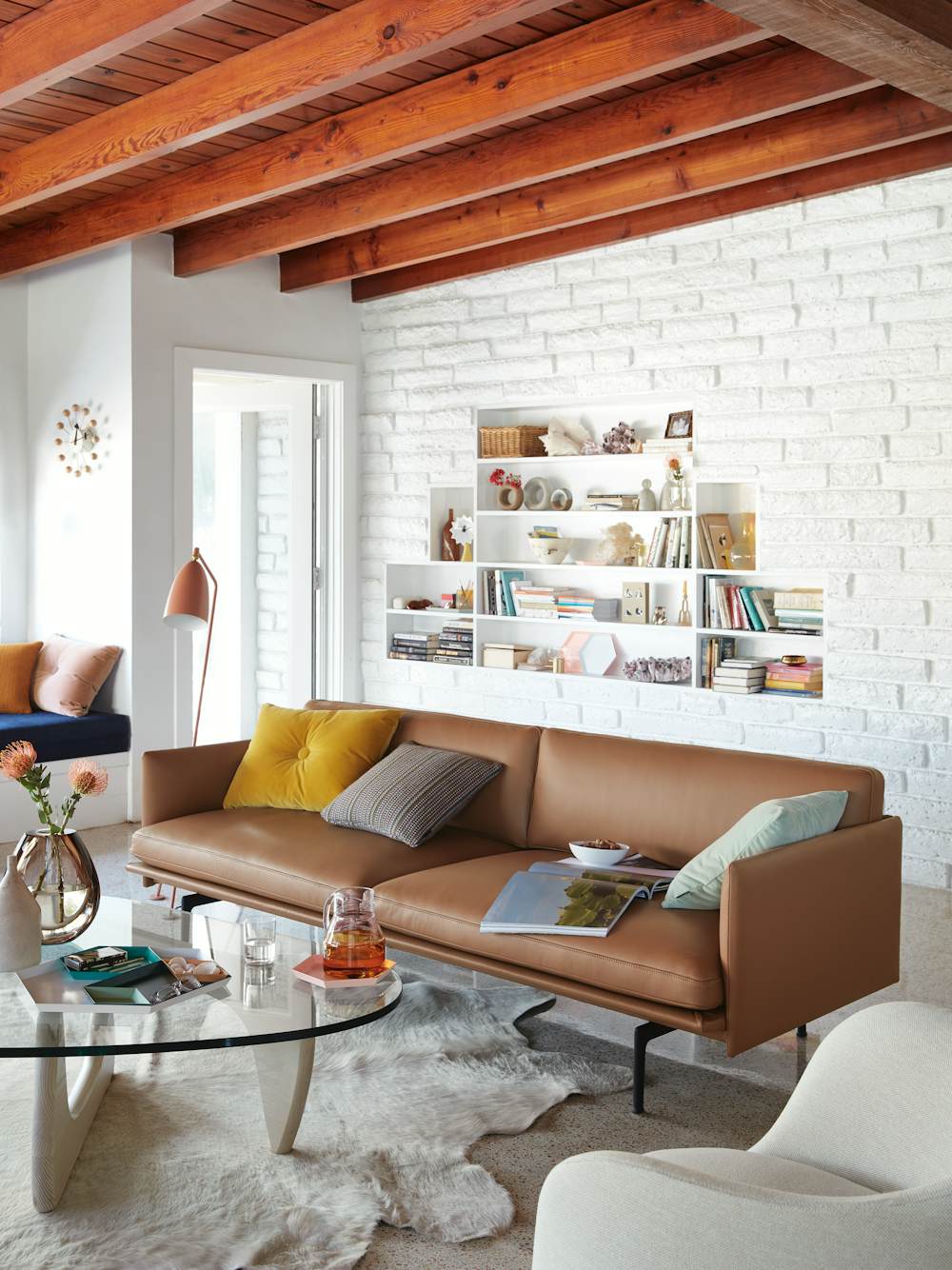
Two + Three-Seater
Standard sofas comfortably seat two to three people, with room for an additional person if you’re willing to get a bit cozy. Most two- and three-seat couches delineate seating surfaces with removable or fixed cushions. This type of couch is a favorite for homes of all sizes, as it pairs beautifully with accent chairs and can be positioned in a wide variety of living room arrangements. Keep in mind that this type of sofa often comes fully assembled, so it’s important to carefully measure elevators, stairwells, hallways, and doorways to ensure you can move one into your space.
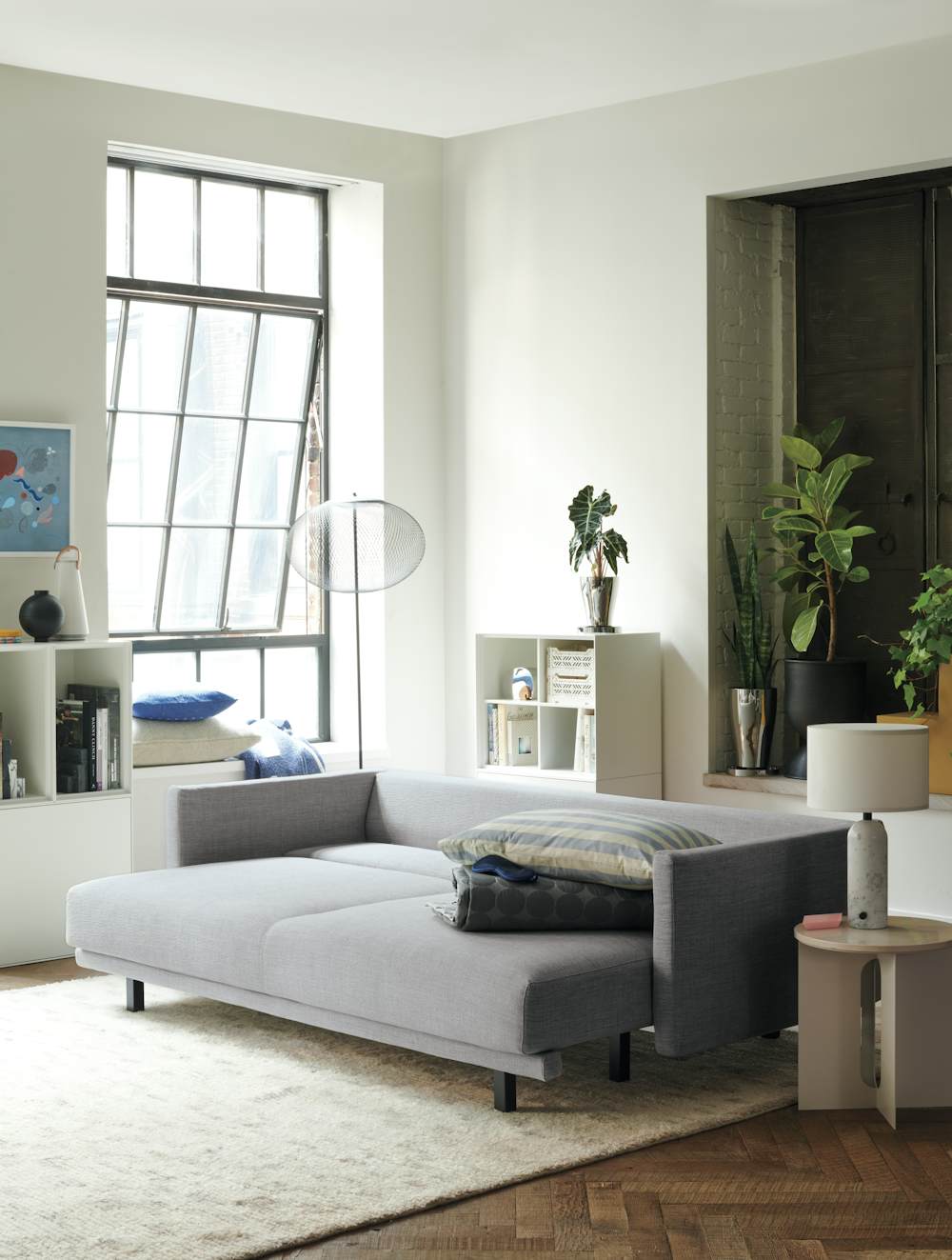
Sleeper
A sleeper sofa – also referred to as a futon, sofa bed, or convertible sofa – is any couch that can be converted into a bed. Many sleeper sofas feature backs that can be reclined flat, though some convertible couches conceal a mattress that unfolds from the seat. Ideal for apartments and homes without guest rooms, sleeper sofas increase both seating and sleeping space.
Sectional Sofa Configurations
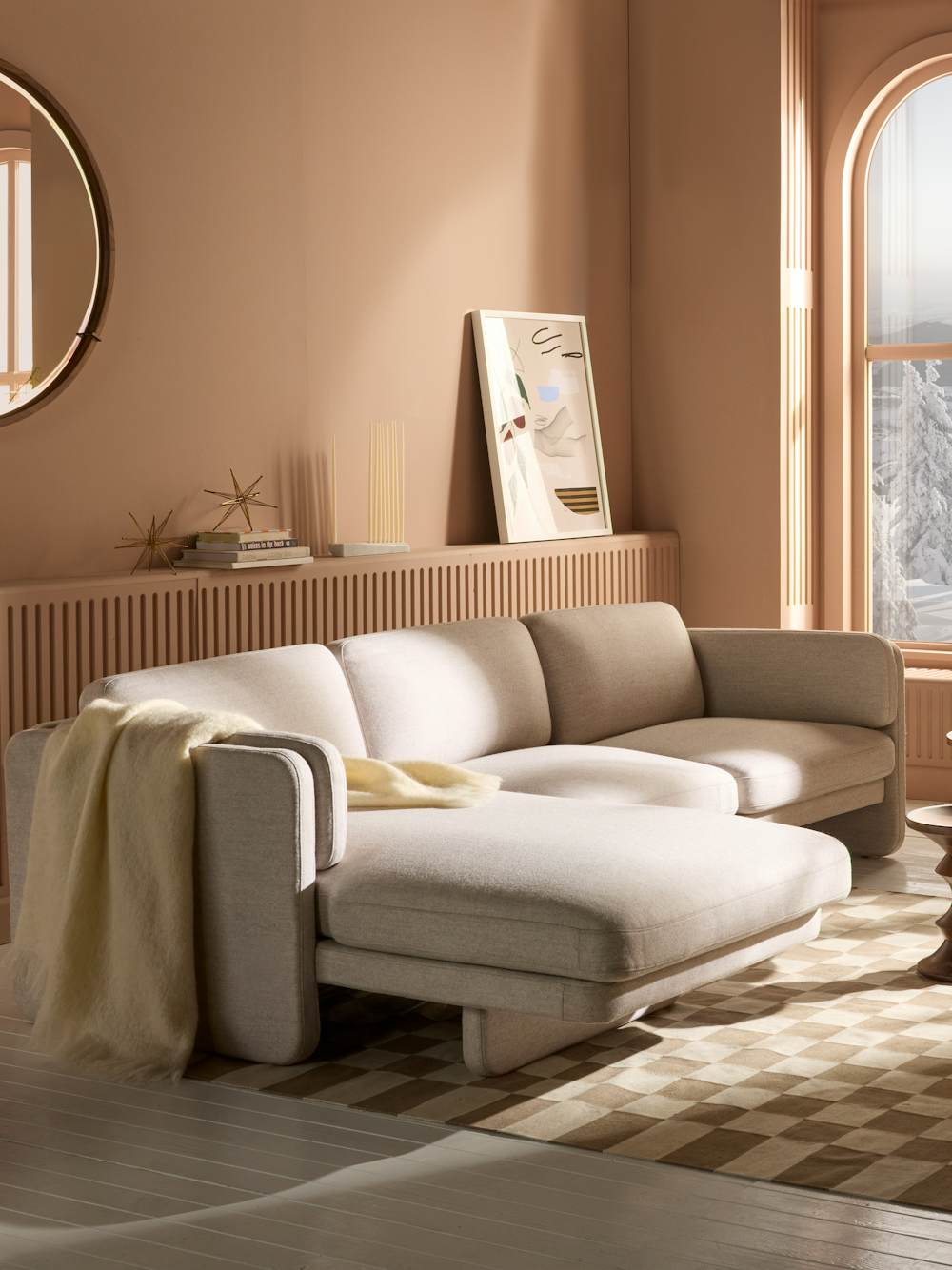
Sectional Chaise
Among the smallest sectionals from which to choose, sectionals with chaises look just like sofas – but with one or more seats that extend to create a comfortable chaise for stretching out. These couches are highly versatile and make a great choice for smaller homes where guests are often hosted. If floor space is tight, a sofa and matching ottoman is an even more versatile seating solution that can replicate the look and feel of a chaise sectional.
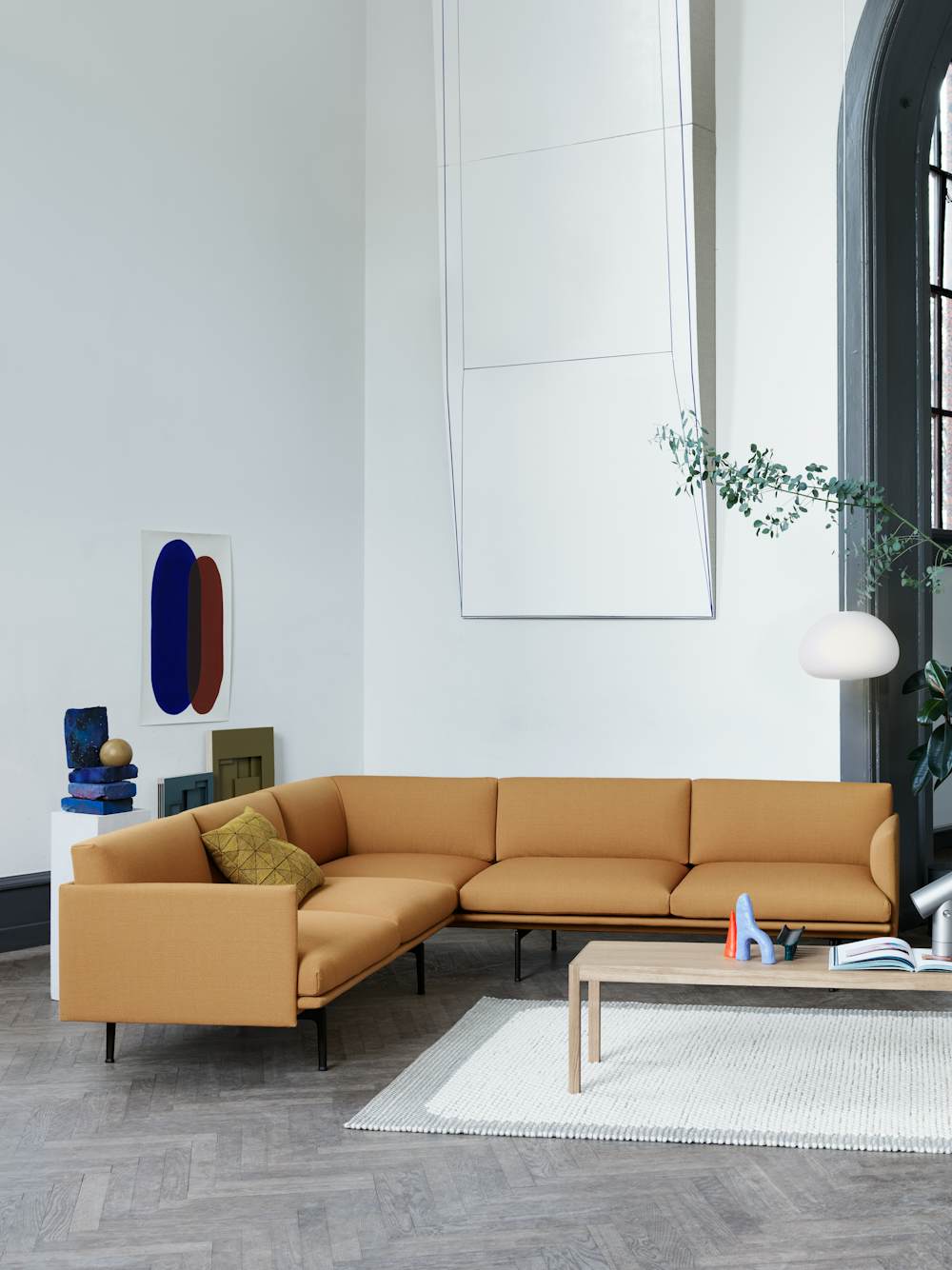
L-Shaped:
L-shaped sectionals, also called corner sectionals, resemble two sofas joined together at a right angle. This type of couch can be either left- or right-facing. With a left-facing sectional, the chaise or extension is on your left as you observe the sofa from the front; with a right-facing couch, the extension will be on your right. These sectionals are roomy and inviting, perfect for spacious living rooms. This type of couch pairs well with a square or round coffee table, where all occupants will be within easy reach of the table.
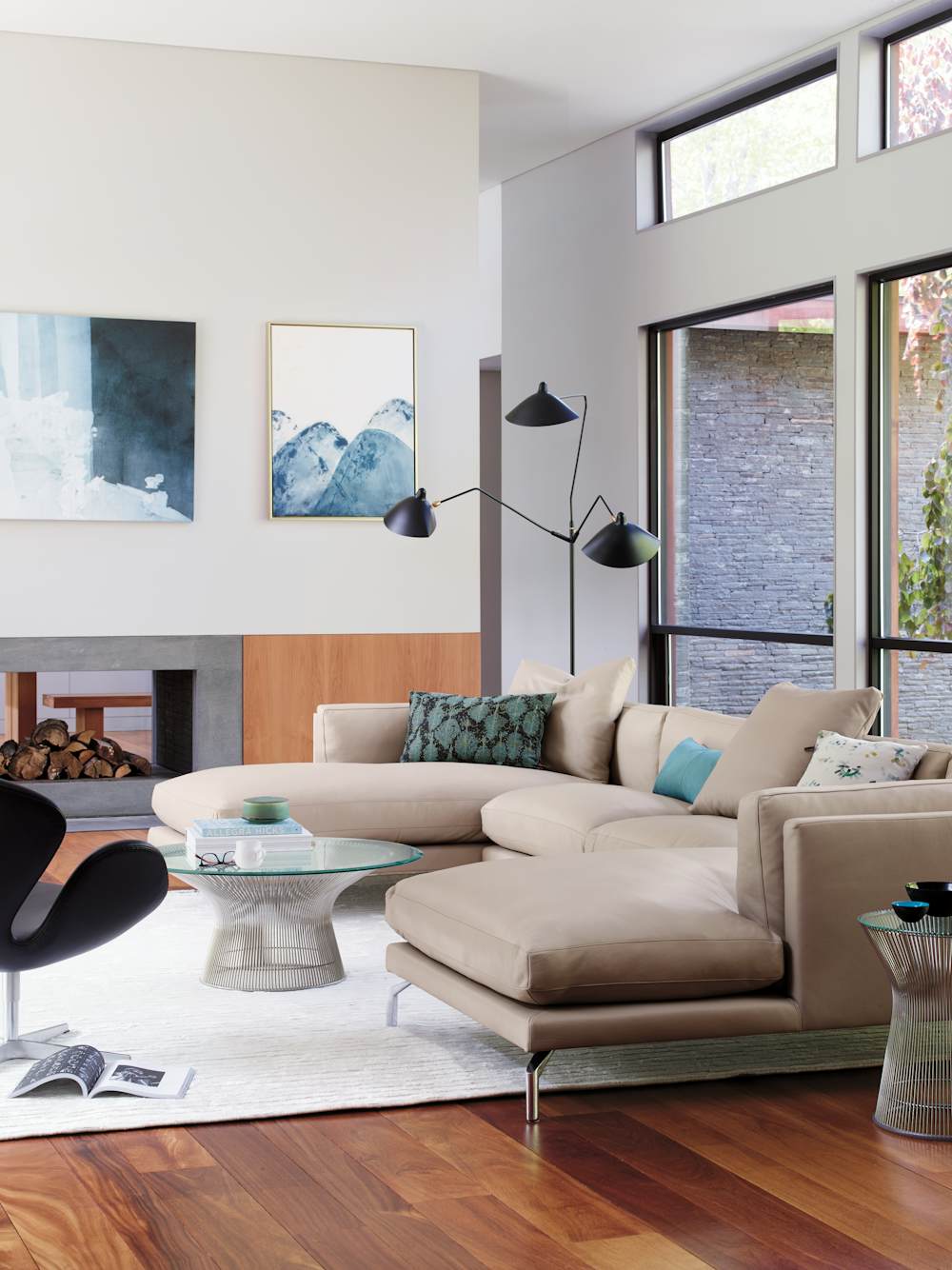
U-Shaped
U-shaped sectionals feature a chaise on each side, joined to the sofa at right angles. On a U-shaped sectional, the two sofa extensions face each other, creating a warm, inviting environment ideal for conversation or coffee table games. This type of sectional is among the largest and is best for large homes that frequently host guests.
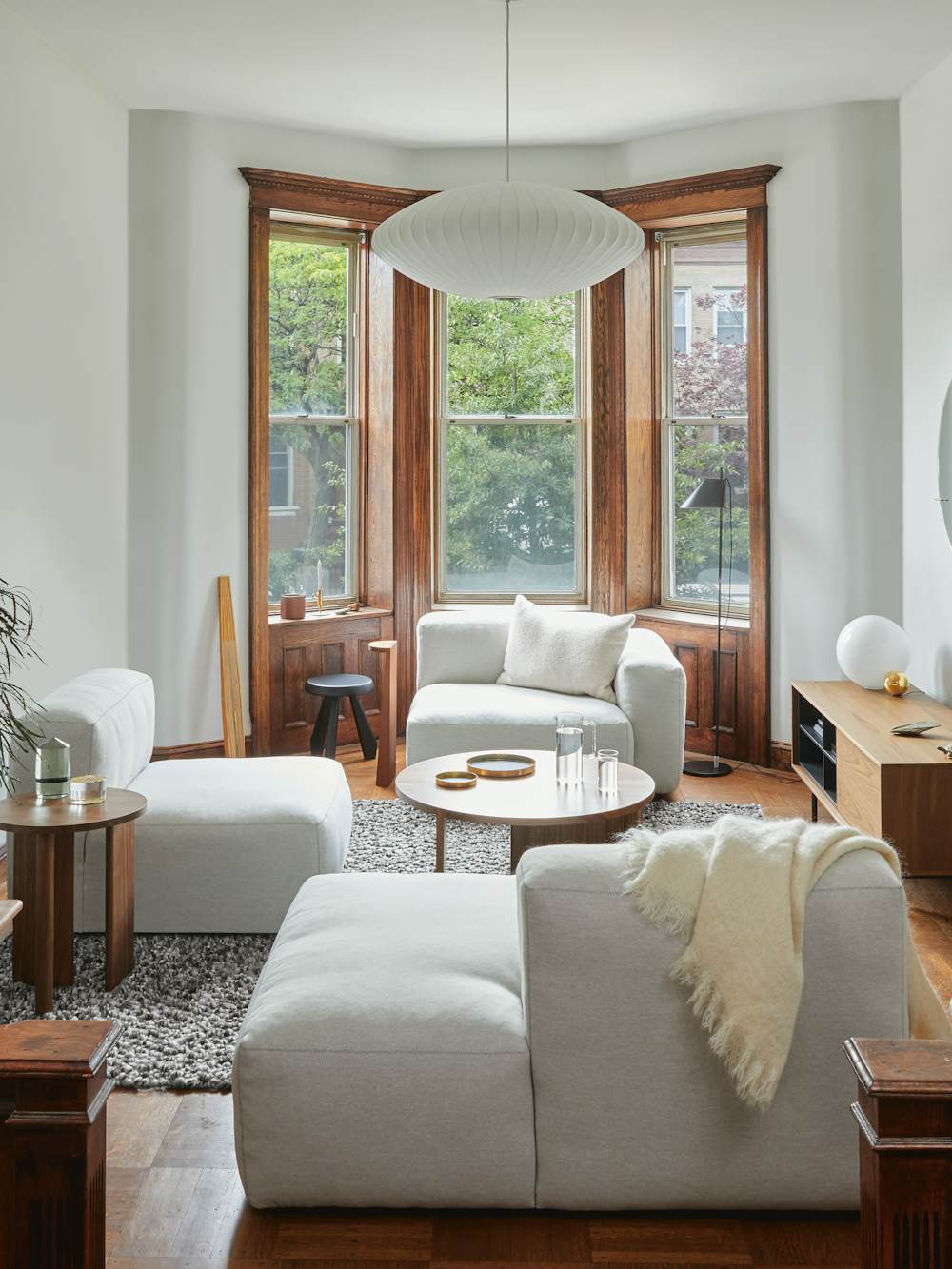
Modular
Like any sectional, a modular sectional or sofa is made up of sections; however, modular sofas are uniquely versatile. Modular couch components are like building blocks that can be arranged and rearranged in a wide variety of configurations to suit different purposes. Many modular sofas like those offered at DWR are available pre-configured, so you don’t have to purchase modules individually.
Modern Sofa Styles
Today’s modern furniture landscape is teeming with unique sofa silhouettes, from traditional tufted styles with rolled arms to sculptural contemporary sofas like Sarah Ellison’s ’70s-inspired Muse Sofa. Though “modern” is an ever-evolving descriptor just as applicable to mid-19th-century sofas as it is to sleek contemporary couches of the aughts, modern sofas do tend to share certain characteristics that set them apart from more traditional sofa styles.
Characteristics of Modern + Contemporary Couches
How to Choose the Right Sofa Size
Now that you’re generally familiar with your sofa options, it’s time to dive into the specifics of sofa dimensions. If you’re furnishing a large space, knowing exact dimensions is less important – as it’s unlikely that a couple of inches here or there will completely interrupt the traffic flow through your space. However, if you have limited space – or have a lot of existing living room furniture, – it’s a good idea to pay close attention to specific dimensions as you shop your favorite styles, specifically sofa length and width.
For freedom of movement throughout the room, you should ensure approximately two to three feet of space between your sofa and other living room furniture, and specifically 14” to 18” between your couch and your coffee table. Placing a sofa against a wall is a great way to save floor space, but, if you can spare a few inches, it’s most visually appealing to arrange it approximately 3” to 4” away from the wall rather than flush against it. As you shop, make note of the length and width measurements of the sofas you like best. Then, measure out pieces of masking tape to those dimensions, and use it to create a rectangular sofa footprint on your floor. This is an easy way to figure out how your sofa or sectional will fit in your space, but you could also create a scaled-down blueprint using a pen and paper.
Don’t forget to check out seat height and depth: Your sofa should be neither more than 4” taller nor shorter than your coffee table. If you anticipate lounging or sleeping on your couch, you should choose a sofa with deep seats – at least 24” deep. And, before you order, measure any elevators, doorways, and hallways to be sure the piece will make it into your home!
How to Choose Sofa Materials
Once you have a better idea of the sofa types and sizes you’re interested in, it’s time to start narrowing your search by materials, starting with upholstery. There are two categories of sofa upholstery materials: fabric and leather. In these categories, there are many, many upholstery options to choose from, each in a wide variety of colors. If you’re considering a sofa from DWR, think about ordering upholstery swatches. Fabric swatches from DWR are complimentary and arrive within 4 to 7 business days. Having a swatch enables you to feel materials and test-drive different colors and textures in your space before you commit to a piece of furniture.
Sofa Upholstery Materials
Fabric
Many sofa styles – especially those from DWR – are available in a wide variety of upholstery fabrics, from textured bouclés to luxe yet durable wool blends. The composition of each fabric varies, but most are blends of natural fibers such as cotton, linen, and wool with the added durability of synthetic fibers like polyester and nylon.
Fabric durability is typically measured in rubs using one of two methods: the Wyzenbeek test (also called the double rub test) or the Martindale test. Both tests simulate natural wear on a material and measure how many rubs it can withstand before it abrades. A durability measurement of at least 15,000 double rubs using the Wyzenbeek test or 25,000 rubs using the Martindale method is qualified for frequent use. If an upholstery material has a lower measurement on either scale, it’s better for infrequent use. When browsing sofa upholstery materials on DWR, click the small question mark icon beside the material name for more information, including its composition, maintenance tips, and durability – measured in rubs or double rubs.
Leather
A timeless, high-quality upholstery material, leather is beautiful, durable, and natural. Many leather sofas can be wiped clean and are thus ideal for families with kids and pets. Plus, no snags or pulls! There are a few different types of leather upholstery available at DWR, including aniline and semi-aniline leather. Aniline leather is largely untreated, dyed using soluble dyes that allow the leather to retain its natural texture and soft hand. This also means it’s slightly more susceptible to damage and slightly more difficult to clean. However, it will develop a unique patina over time and use. On the other hand, semi-aniline leather is treated, but only minimally, finished with slightly pigmented dyes that give the leather a more uniform color and texture – and protect it against stains and wear.
Many leather sofas are also available in full-grain and top-grain leather. Full-grain leather is thicker and more durable than top-grain leather, which is softer and thinner. Leather durability is typically not measured in rubs like other upholstery fabrics; rather, a leather’s finish and thickness (often listed in millimeters) will inform its durability. Thicker, semi-aniline leather is the most durable.
All About Sofa Construction
As you shop for modern sofas at DWR, you’ll come across more terminology denoting the sofa’s construction and fill, which are also very important considerations to keep in mind before you make a purchase.
Sofa Construction Components to Consider

Frame/Legs:
To start, sofa frames and/or legs can be either external or internal. External frames and legs influence the appearance of your sofa as much as its stability. External sofa frames tend to be made of solid wood, typically oak, walnut, or beech, while internal sofa frames are typically made of hardwood, steel, or a combination of materials. Some metal sofa legs may be made of cast aluminum or steel. Solid wood or steel frames, kiln-dried hardwood, corner-blocked joints, and steel-reinforced plywood are all characteristics of sturdy, well-made sofas – whereas glued joints and non-reinforced manufactured wood frames are likely to be less sturdy.
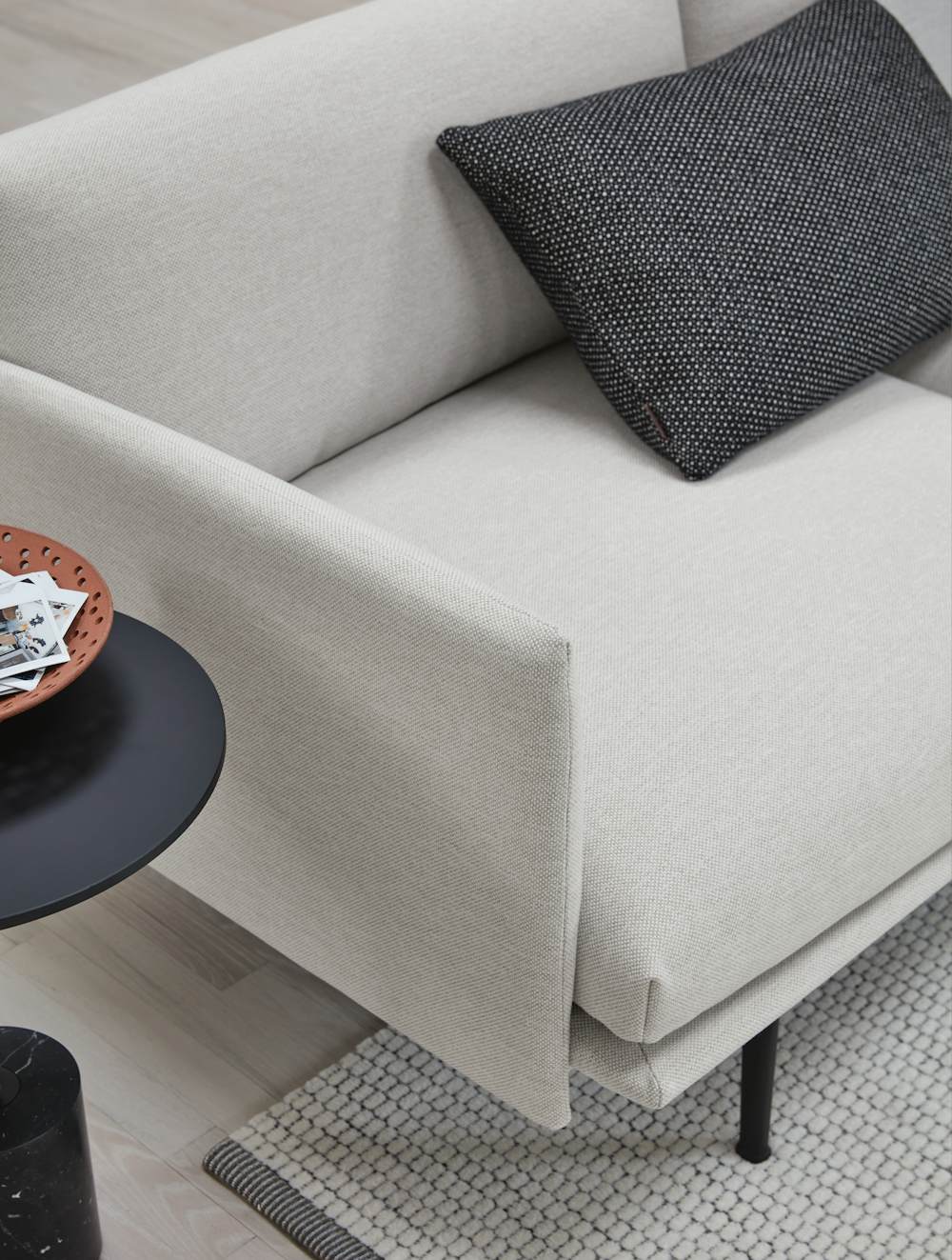
Suspension
At DWR, sofas will typically have one of two types of suspensions: spring or web suspensions. Spring suspensions comprise metal springs that span laterally across the sofa, secured by elastics or wires which run perpendicular to the zig-zag-shaped springs. Web suspensions exchange metal springs for elastic bands, which may be basket-woven or run unidirectionally – parallel – across the sofa. Spring suspensions tend to have more give than web suspensions, while unidirectional web suspensions are firmer and better at isolating movement.
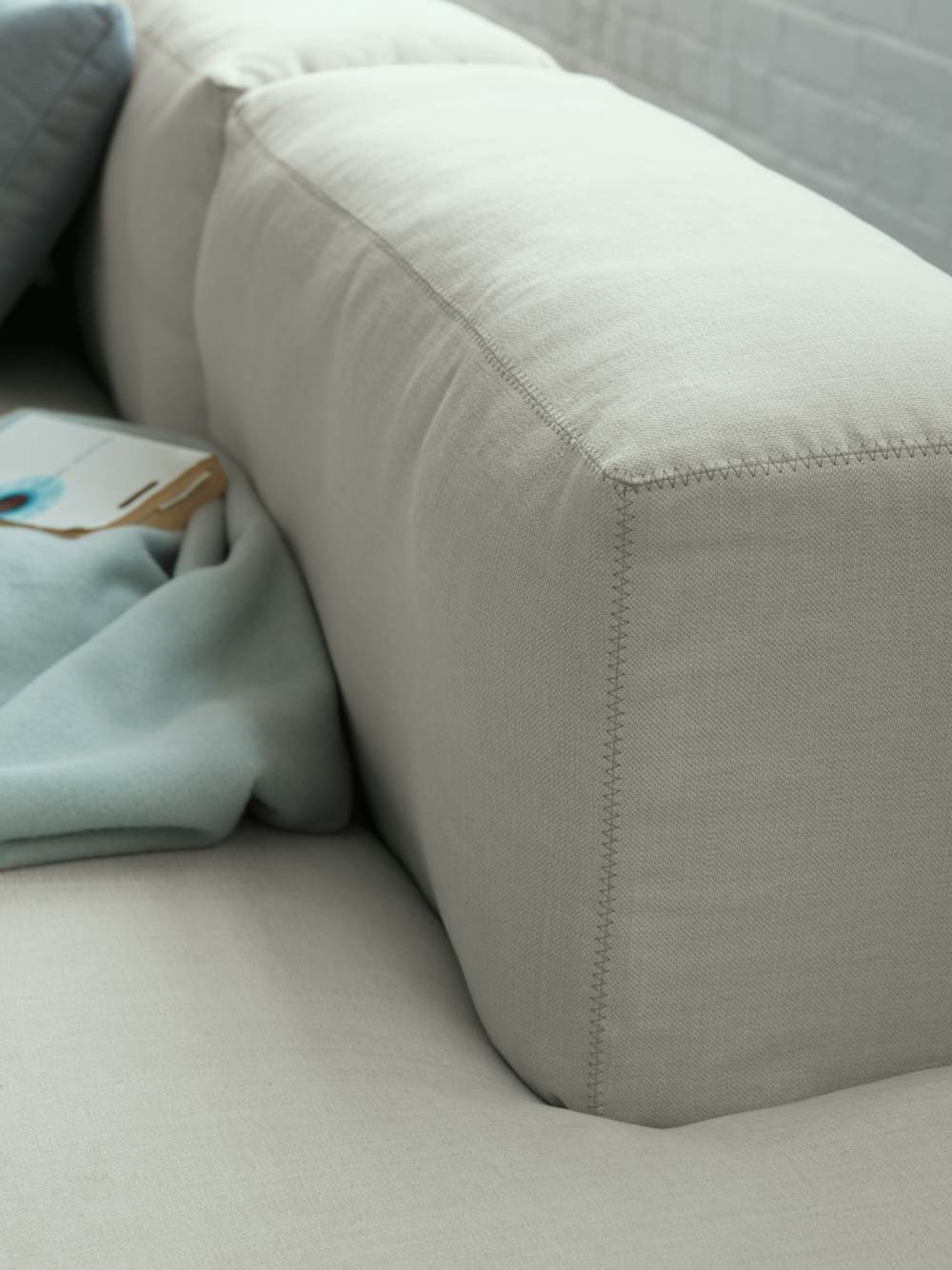
Seat/Back Cushion Fill
At DWR, sofa seat and back cushions are typically filled with polyurethane foam (sometimes featuring Dacron® wrap, a polyester filler designed to add structure); Poly-fil® (polyester stuffing offered as a vegan/allergy-free alternative to feathers); down feathers; goose feathers; Piumafil (biodegradable stuffing made of 85% cotton and 15% kapok fiber, a cellulosic natural fiber); synthetic granulate filling; and other fill materials. Foam filling may be described by its density, with higher-density foams and memory foams being firmer, more durable, and more shock-absorbent than lower-density options. Feather and feather-alternative fills are softer but won’t hold their shape as well as foam. Granulate filling is best for cushions that don’t need to hold their shape, as granulate-filled pillows will look and feel like beanbags.
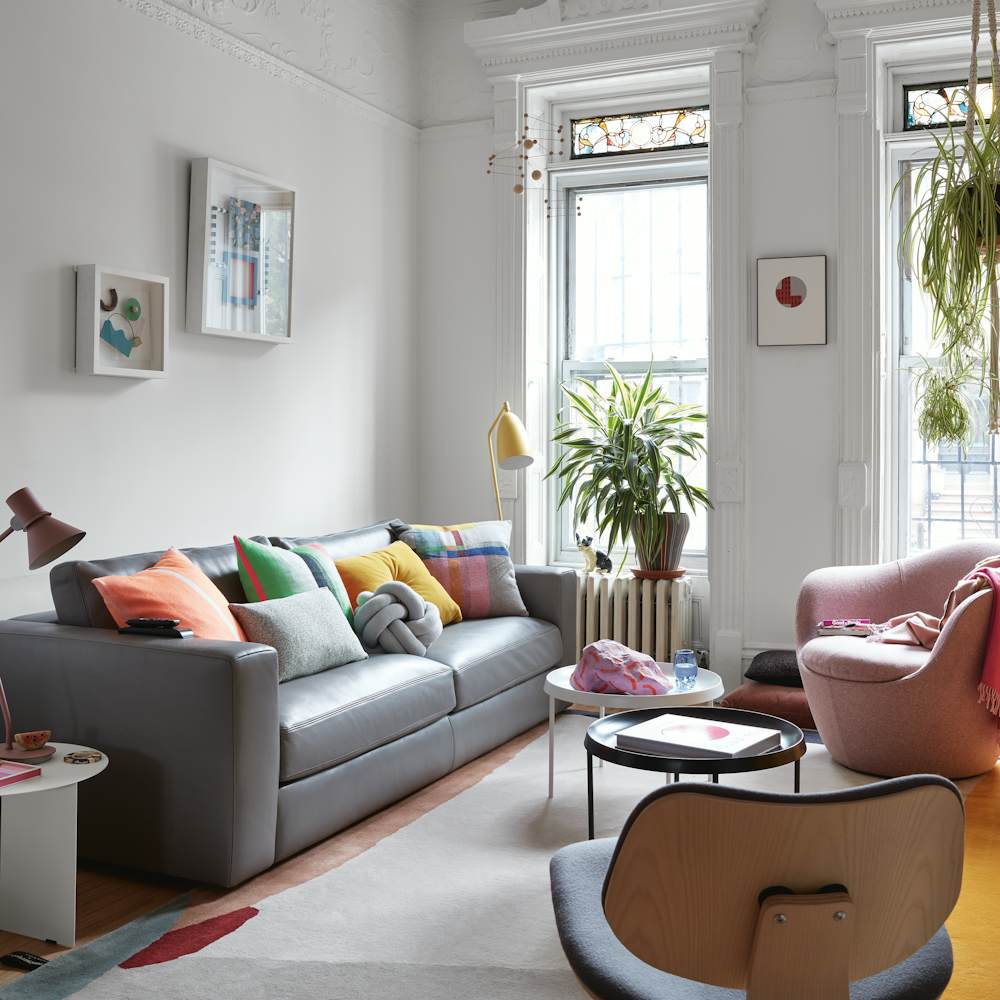
Final Tips
Hopefully, these tips take some of the guesswork out of selecting the right sofa for you.
- Remember: size, style, and material are the top three considerations to keep in mind.
- Choose a sectional, sofa, or settee based on the size of your living room.
- Choose a piece that is equally aesthetically pleasing and pragmatic — a style that plays well with your home’s interiors.
- Choose a material that not only sets the right tone for your living room but also suits your lifestyle.

